Is Your Library Ditching Dewey?

Do you still teach the Dewey Decimal System in your school library? Or, are you ditching Dewey? It amazes me how many people, including school administrators, say, “Now that your catalog is on the computer, I guess you don’t need the ole Dewey Decimal System anymore, huh?” They are obviously confusing the OPAC with the DDC.

Shelving by Genre
Some librarians have “genrefied” their fiction sections, filing all mysteries together, with romances and westerns separated (but what if it’s a western romance?). Science fiction and fantasy are on different shelves, not together by author. Many bookstores use this arrangement. But, in my elementary school library, my fiction titles are still in alphabetical order. I think it’s great to reinforce those alphabetical skills the younger students are learning. And even older students gravitate toward their favorite authors. Some authors, such as Avi, write a wide variety of genres. He has written realistic fiction, fantasy, historical fiction, mystery. Why not shelve them all under his name? I do affix genre spine labels, so kids who like a certain genre can browse and find them.
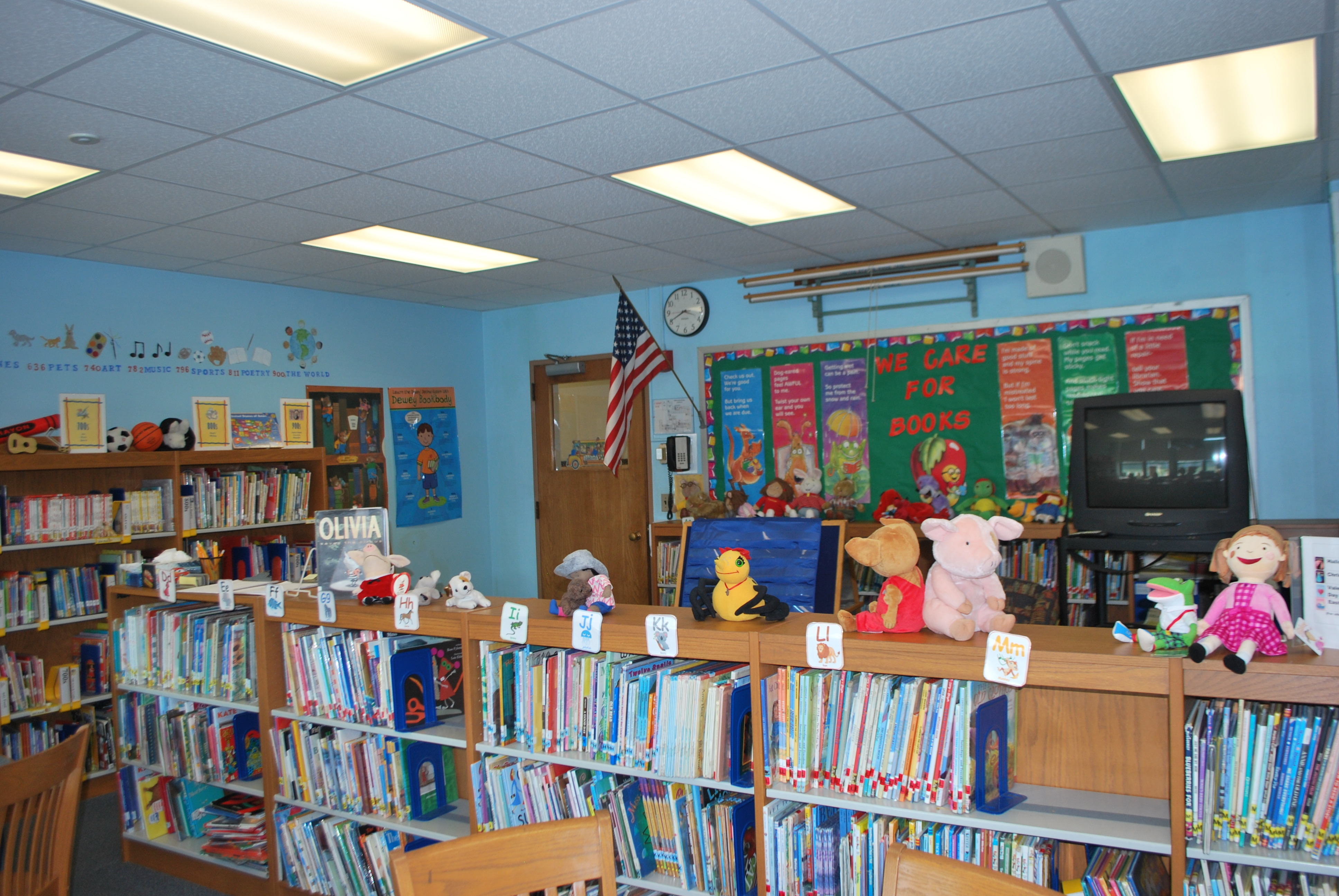
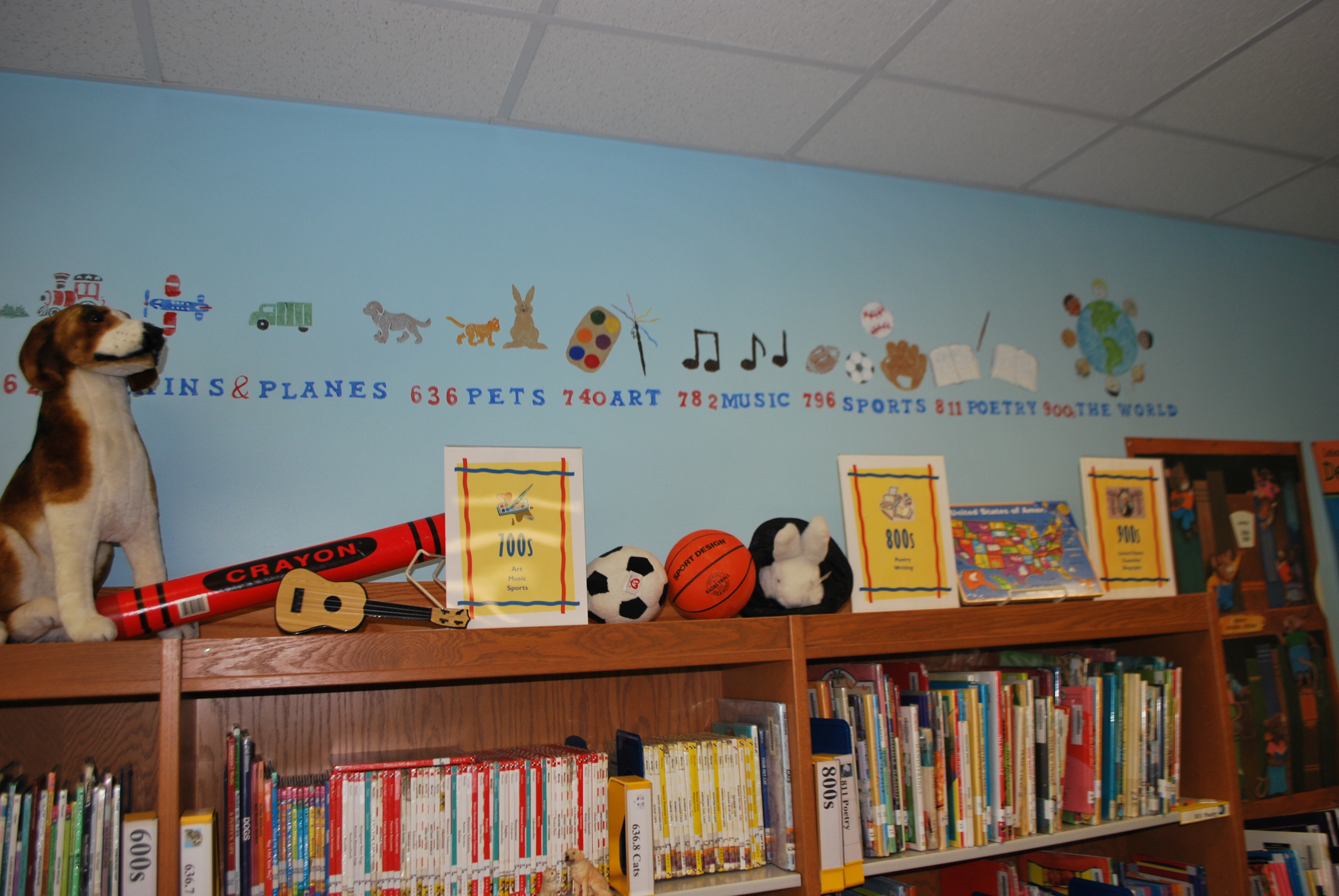
De-Dewefication
Other librarians have gone even further. They have combined their related nonfiction titles, regardless of Dewey Decimal number. Some call this “de-Dewefication”! So, instead of travel books on Italy being in the 740s and Italian cookbooks in the 641s and Italian language books in the 400s, all books with an Italian theme are shelved together.
Maybe I’m old-fashioned, by I still shelve my nonfiction titles by Dewey Decimal number. I usually order them cataloged by only 1-2 digits past the decimal. Most of our elementary school students only focus on the whole Dewey number. However, in something like sports, decimals matter (math teachers love this). All sports books carry the 796 Dewey number, but basketball is 796.32; football is 796.33; tennis is 796.34 and so on.
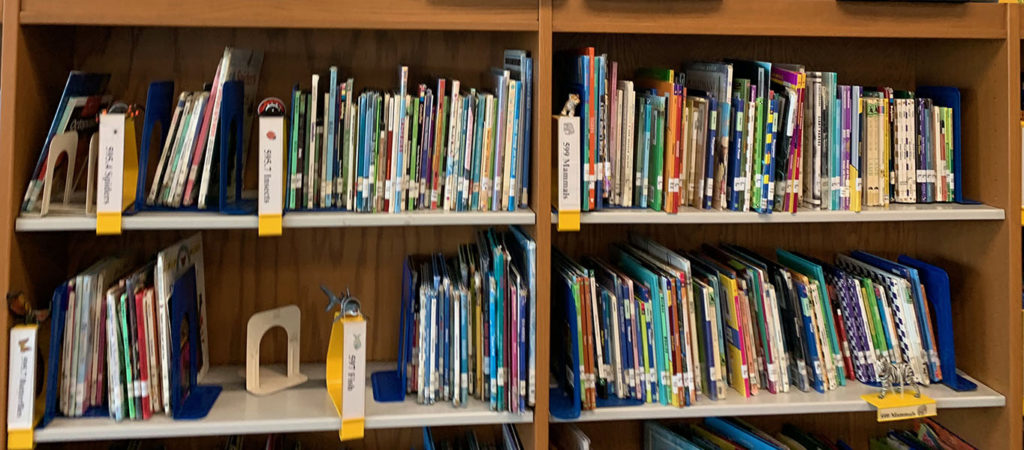
Teaching the Dewey Decimal System
I feel that it is a useful skill because the public library still uses it, as well as the middle school and high school libraries. So, it’s a transferable skill. When my nephew was in the Cub Scouts, they went on a field trip to the public library. Naturally, his aunt the librarian went along. I said, “Hey guys, do you want to see where the sports books are?” They followed me like little blue and gold ducklings down the 700 aisle! I sometimes pull books on a particular theme from different Dewey numbers. For example, if we are studying the rain forest, I will put together a display of rain forest animals, plants, indigenous people, regions such as the Amazon (no…not that Amazon…put those computer books back).
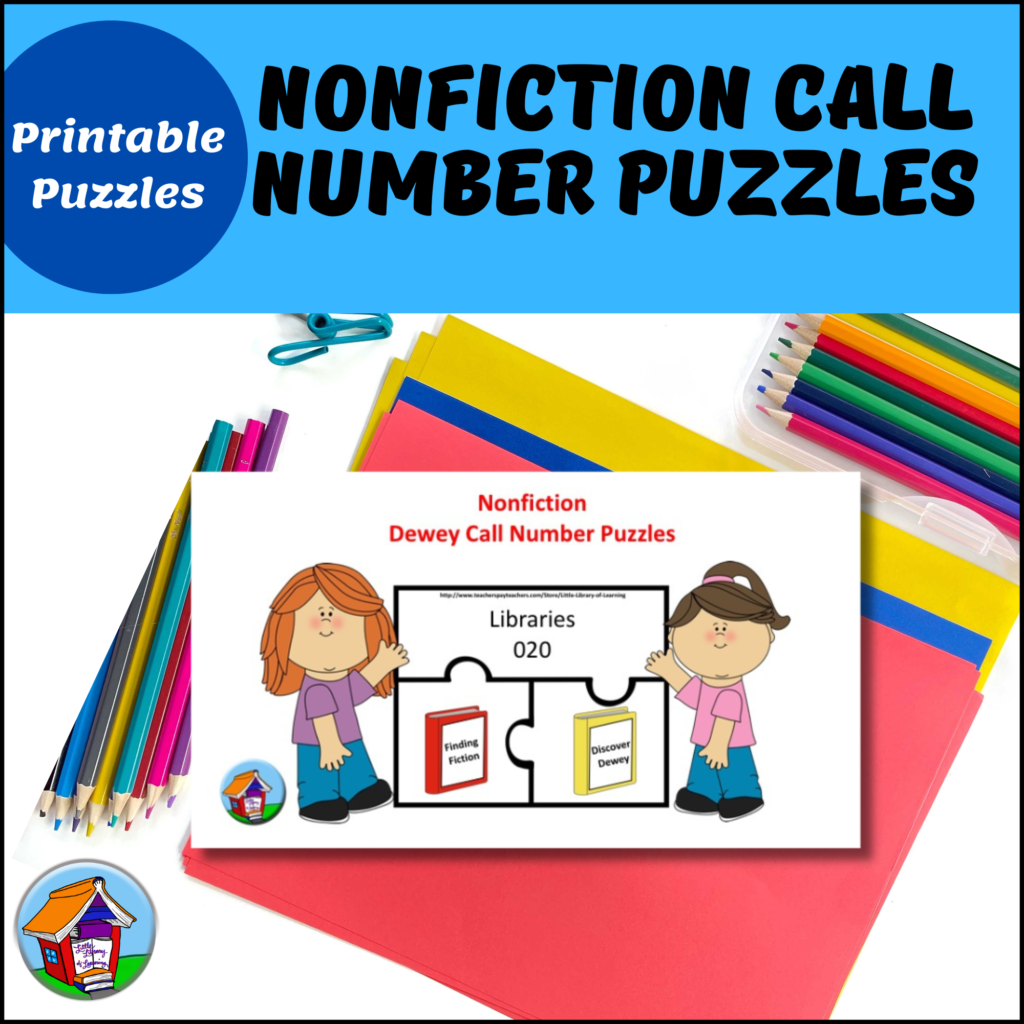
Do you want a free set of Dewey puzzles? Click HERE.
Make Dewey Fun Again
Still, it is a bit challenging to teach the Dewey Decimal System (and let’s face it, it could be a bit boring). I’ve tried various game-like activities. We march around the library and stop at different sections. Students have scavenger hunts and try to find books with different Dewey numbers. They sort piles of books on the tables by Dewey number. I also have “clip cards,” which display a sample book cover with a title. The kids clip a pinch clothespin to the correct call number. I give them Dewey charts for reference.
Click HERE to buy these cards from my Teachers pay Teachers store.
But these activities are kind of low-tech. If you want to engage your students with learning the Dewey Decimal System using technology, try these ideas. I have two Dewey games using Google Slides. One is called “Dewey Splat.” A book title is displayed on the board and students tap on the correct call number. The number disappears under a splat of paint.
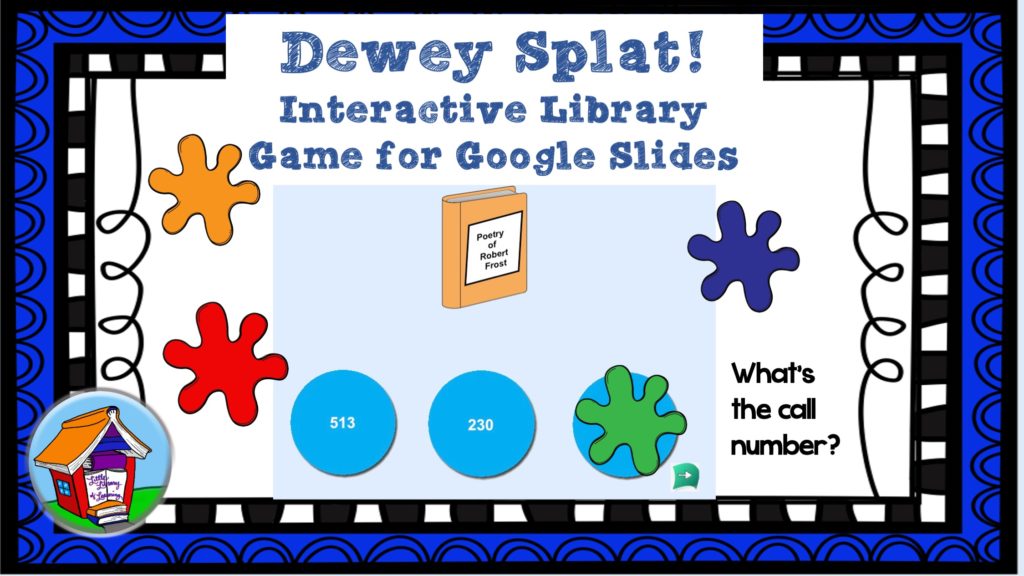

Another game I created is called “Don’t Let Dewey Bug You.” Again, a book title is displayed. This time, the call numbers are on outlines of insects. Students can swat the bugs with their hand (or fly swatter, for more fun and possibly dangerous horseplay in the library!). The correct bug disappears. I have both these games in Smart Notebook format and Google Slides format.
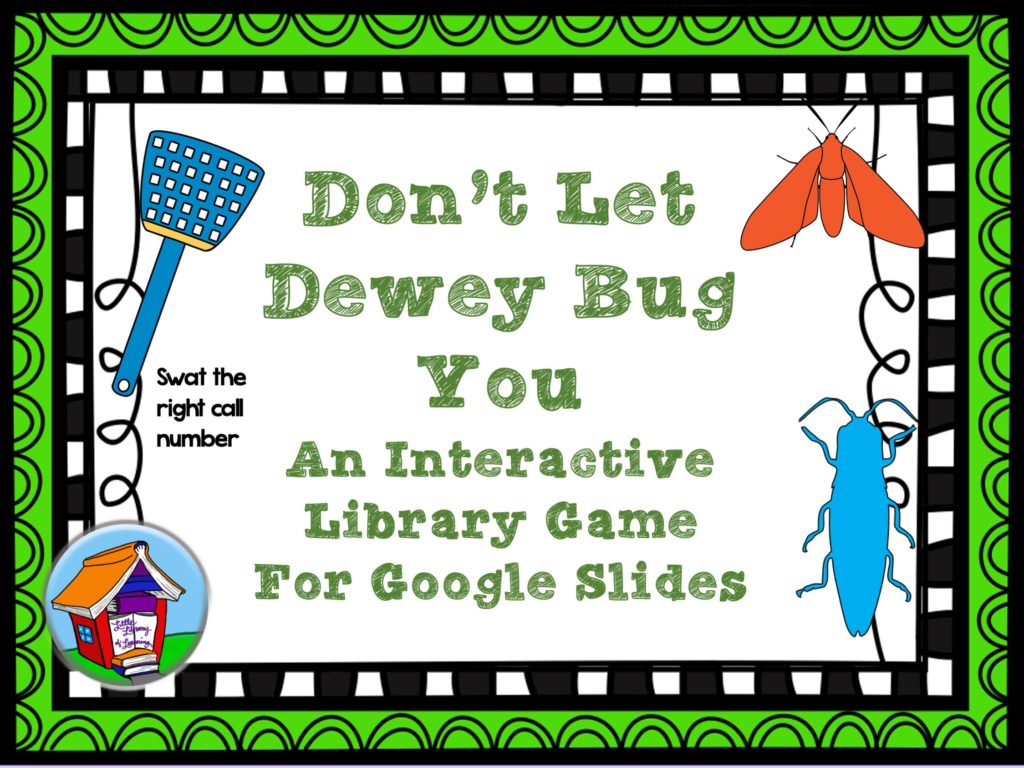
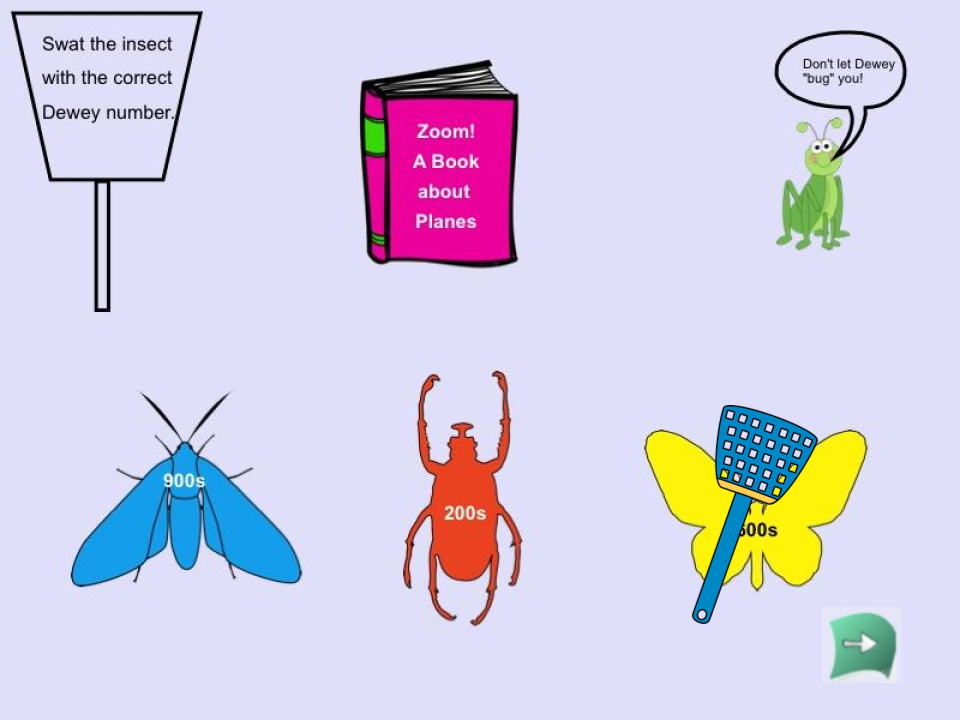
If you prefer BOOM Cards, I have decks for shelving nonfiction books by Dewey Decimal System or fiction books by author’s last name. BOOM Cards are self-correcting digital task cards hosted on the BOOM Learning website.
By the way, if you want to explore more about Teachers pay Teachers (TpT), you can read this blog post:
How Can Librarians Benefit from Teachers pay Teachers
Hey, maybe more librarians should not let Dewey bug them! As long as you organize your books so patrons can find them, does it really matter if you use Dewey or another system? I personally would not be too quick to ditch Dewey!
Sign up for email and blog updates and receive this free activity as a thank you!
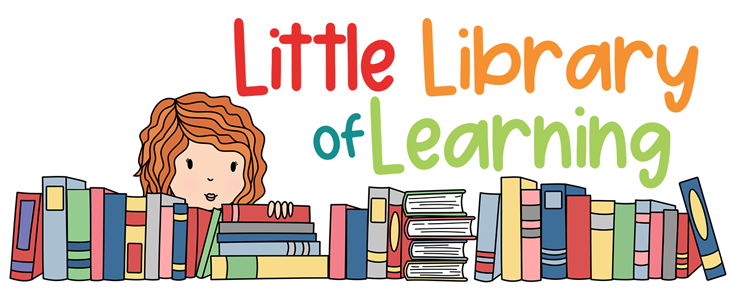








Love this post, Ann. I’m retired now but I kept my library in Dewey order. In my opinion, our little patrons need to learn about authors and all the types of books that an author might write. It’s book stores that drive me nuts. I can never find hardly anything!! I also asked our grocery store to please alphabetize the SOUP! And your library looks so inviting!!!
Thanks for the kind words! That’s too funny about alphabetizing the soup! When I am in the public library, I surreptitiously put mis-shelved books back into place!